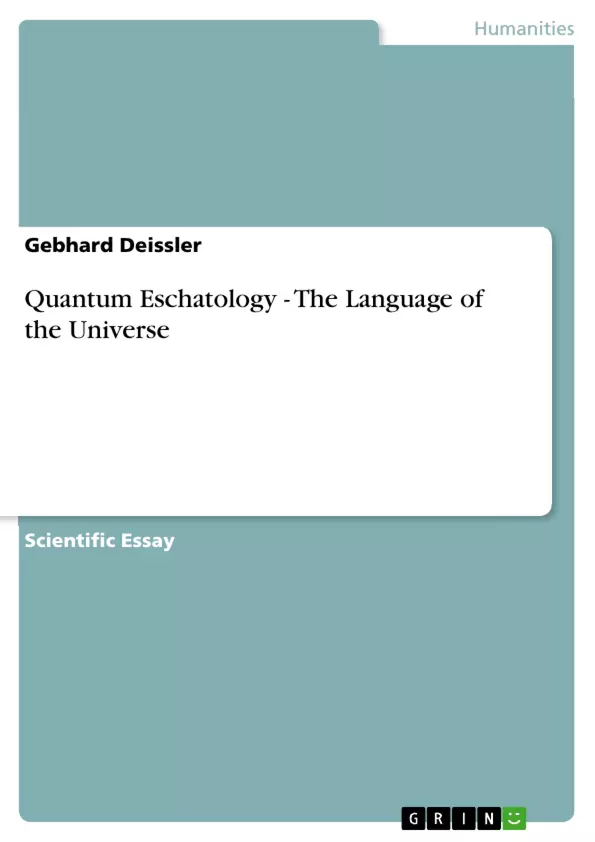Since times immemorial cultures and civilizations have been trying to unravel
the mystery of creation and of the universe. Man’s ability to ask questions, to
interconnect answers and to recognize cause-effect relationships prompted him to
penetrate ever more deeply into the mystery of creation.
Most cultures and civilizations pushed their questioning to the point of asking what
interconnected the whole of the universe, the visible and the invisible alike. Answers
to those last questions about what sustained the universe and man were offered in
the form of consciousness in South-Asia, in the form of Chi or Ki in East Asia, in the
form of personal Gods and deified entities in other parts of the world. All of them
seem to contain some of what we assume to be the truth to this very day. Ancient
Greece, the Cradle of Western civilization came up with the term ether as the fifth
quintessential element that, as prana or Chi/Ki (Chinese/Japanese) connected the
entire field of the world. And these beliefs are being adhered to by many cultures to
this very day. Even quantum physics with its refinement as quantum field theory
could not go beyond an electromagnetic interconnected field that seems to hold
together the tangible universe. In its representatives’ views electromagnetic waves
constituted the interconnected field that supported the whole. This assumption was
extended, as the dominant science paradigm of the era, from the microcosm of
subatomic particles also readable as waves since Bohr’s wave-particle theory of the
early 20th century to the macrocosm including the universe of man, who seems to
occupy a position of the middle on the continuum from infinity to infinity. The latter
was assumed to be the case by the French philosopher and mathematician Blaise
Pascal. As a creature of the middle this position suggested interdependence in
relationship to the periphery that entailed that middle. Although, the term
interconnected field emerged only later in particular in connection with the quantum
paradigm. [...]
Inhaltsverzeichnis (Table of Contents in English)
- Part 1: QUANTUM ESCHATOLOGY: LANGUAGE OF THE UNIVERSE
- Teil 2: Die Pfingstbotschaft für den Menschen des Globalen Zeitalters
Zielsetzung und Themenschwerpunkte (Objectives and Key Themes in English)
This work explores the concept of "quantum eschatology" as a way of understanding the language of the universe. It delves into the significance of the Pentecost message for humanity in the global age.
- Quantum Eschatology
- Language of the Universe
- Pentecost Message
- Global Age
- Intercultural and Transcultural Management
Zusammenfassung der Kapitel (Chapter Summaries in English)
- Part 1: QUANTUM ESCHATOLOGY: LANGUAGE OF THE UNIVERSE: This chapter introduces the concept of quantum eschatology as a framework for understanding the language of the universe.
- Teil 2: Die Pfingstbotschaft für den Menschen des Globalen Zeitalters: This chapter explores the relevance of the Pentecost message in the context of a globalized world, examining its implications for intercultural and transcultural management.
Schlüsselwörter (Keywords in English)
This work centers around the concepts of quantum eschatology, language of the universe, Pentecost message, global age, intercultural and transcultural management.
- Arbeit zitieren
- D.E.A./UNIV. PARIS I Gebhard Deissler (Autor:in), 2012, Quantum Eschatology - The Language of the Universe, München, GRIN Verlag, https://www.grin.com/document/196136



